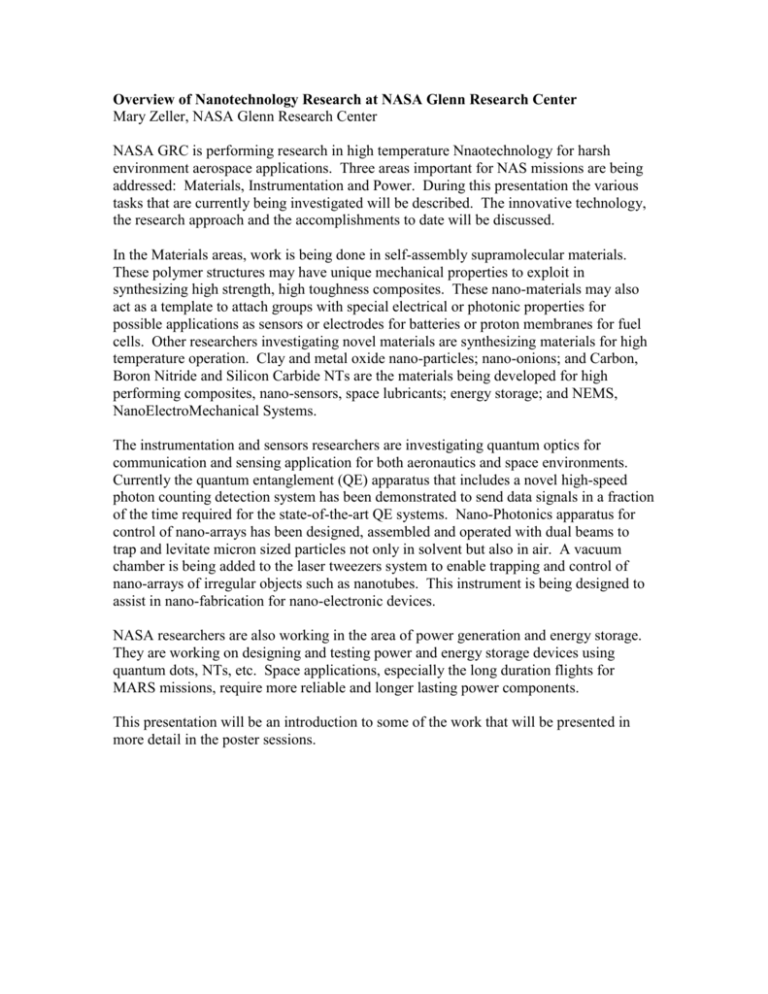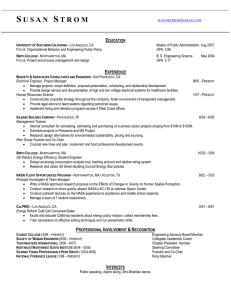Overview of Nanotechnology Research at NASA Glenn Research
advertisement

Overview of Nanotechnology Research at NASA Glenn Research Center Mary Zeller, NASA Glenn Research Center NASA GRC is performing research in high temperature Nnaotechnology for harsh environment aerospace applications. Three areas important for NAS missions are being addressed: Materials, Instrumentation and Power. During this presentation the various tasks that are currently being investigated will be described. The innovative technology, the research approach and the accomplishments to date will be discussed. In the Materials areas, work is being done in self-assembly supramolecular materials. These polymer structures may have unique mechanical properties to exploit in synthesizing high strength, high toughness composites. These nano-materials may also act as a template to attach groups with special electrical or photonic properties for possible applications as sensors or electrodes for batteries or proton membranes for fuel cells. Other researchers investigating novel materials are synthesizing materials for high temperature operation. Clay and metal oxide nano-particles; nano-onions; and Carbon, Boron Nitride and Silicon Carbide NTs are the materials being developed for high performing composites, nano-sensors, space lubricants; energy storage; and NEMS, NanoElectroMechanical Systems. The instrumentation and sensors researchers are investigating quantum optics for communication and sensing application for both aeronautics and space environments. Currently the quantum entanglement (QE) apparatus that includes a novel high-speed photon counting detection system has been demonstrated to send data signals in a fraction of the time required for the state-of-the-art QE systems. Nano-Photonics apparatus for control of nano-arrays has been designed, assembled and operated with dual beams to trap and levitate micron sized particles not only in solvent but also in air. A vacuum chamber is being added to the laser tweezers system to enable trapping and control of nano-arrays of irregular objects such as nanotubes. This instrument is being designed to assist in nano-fabrication for nano-electronic devices. NASA researchers are also working in the area of power generation and energy storage. They are working on designing and testing power and energy storage devices using quantum dots, NTs, etc. Space applications, especially the long duration flights for MARS missions, require more reliable and longer lasting power components. This presentation will be an introduction to some of the work that will be presented in more detail in the poster sessions.











